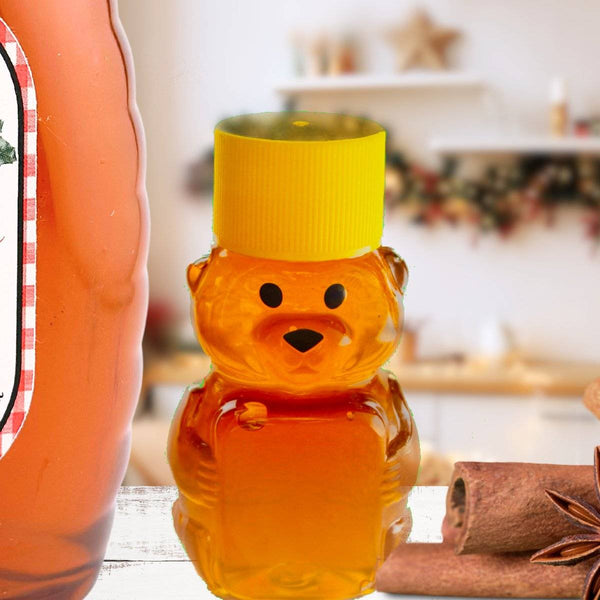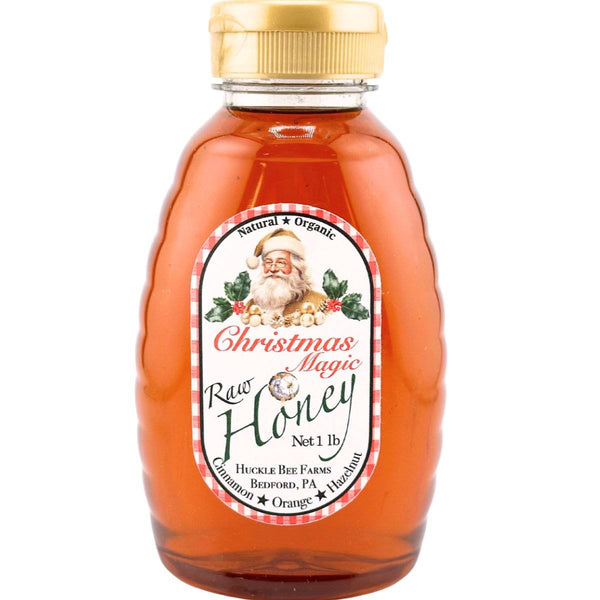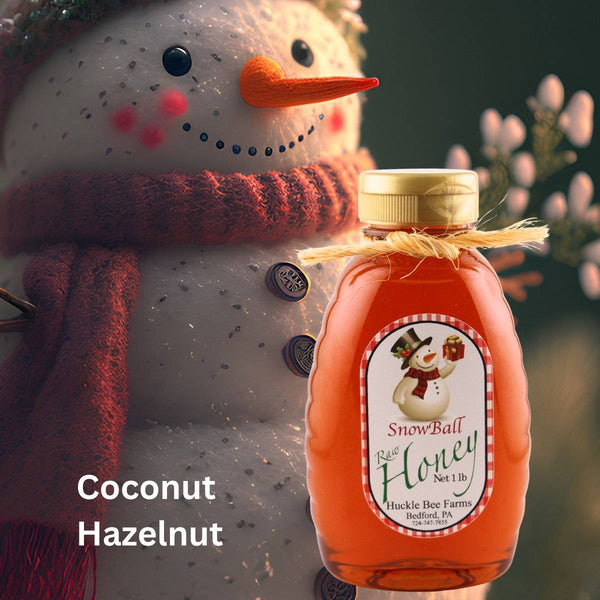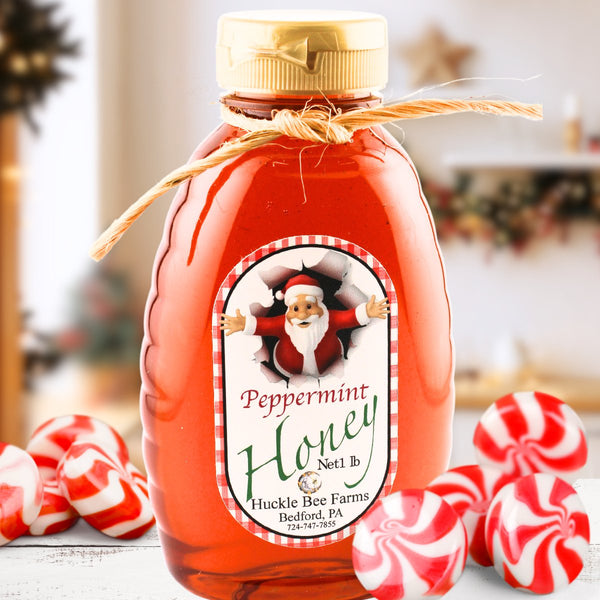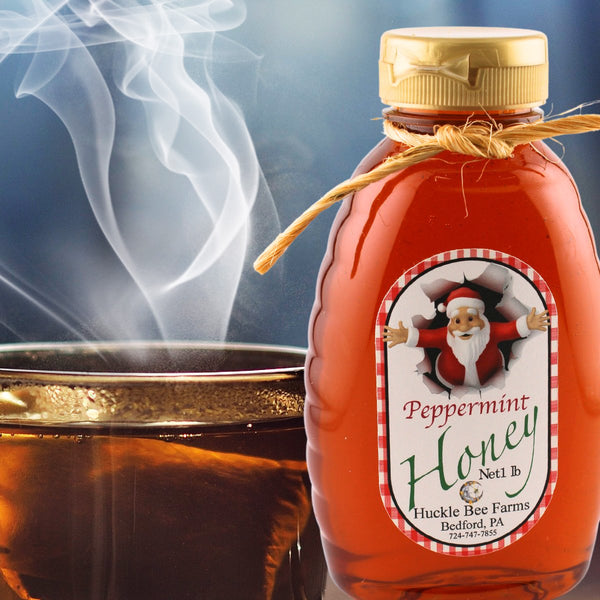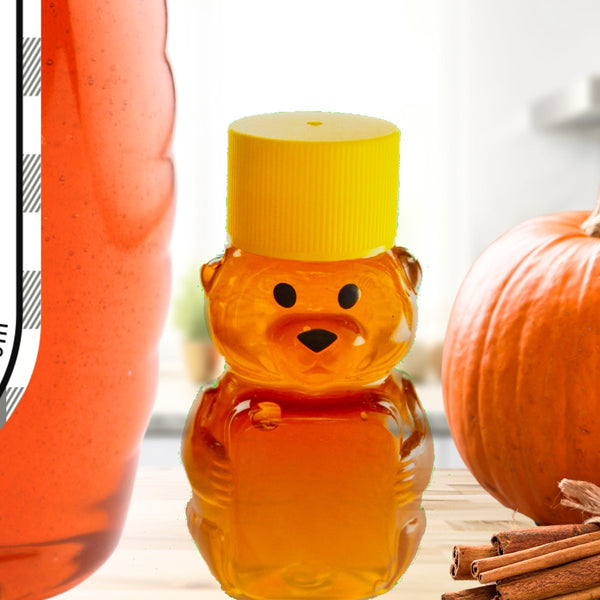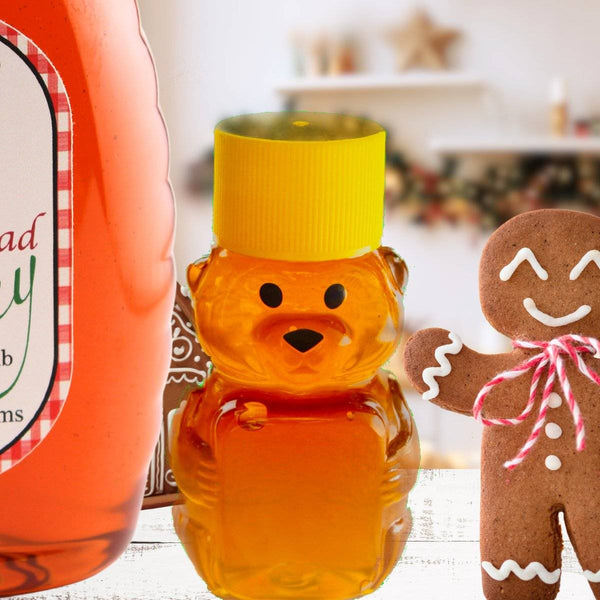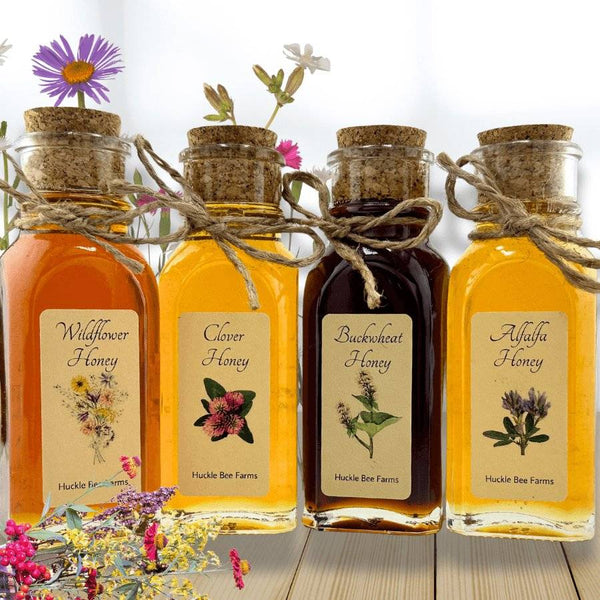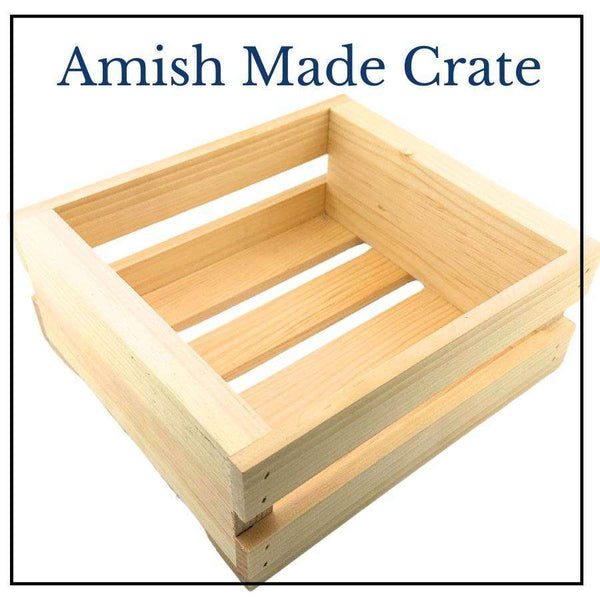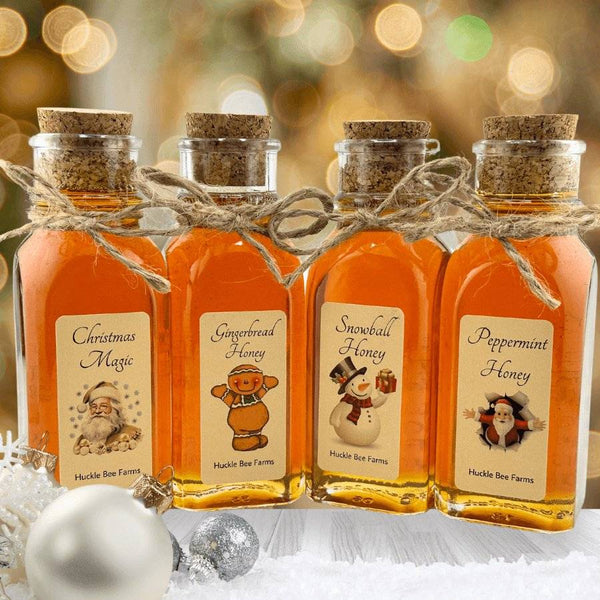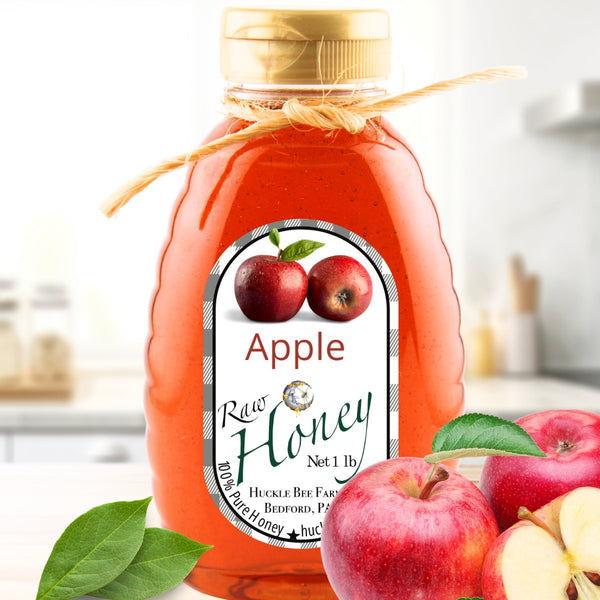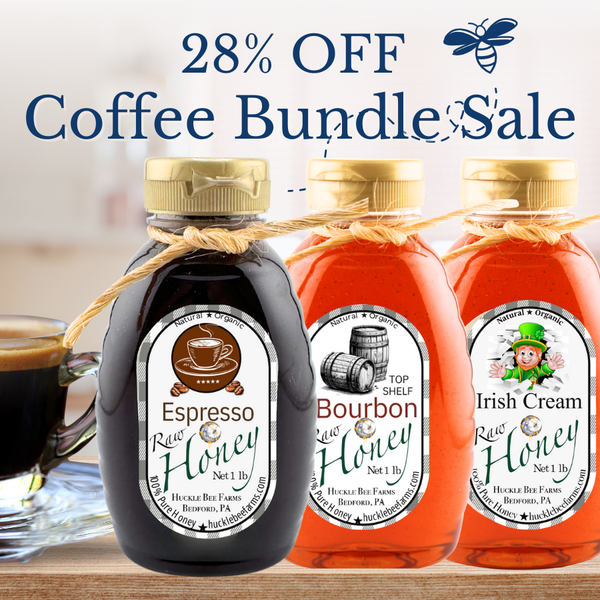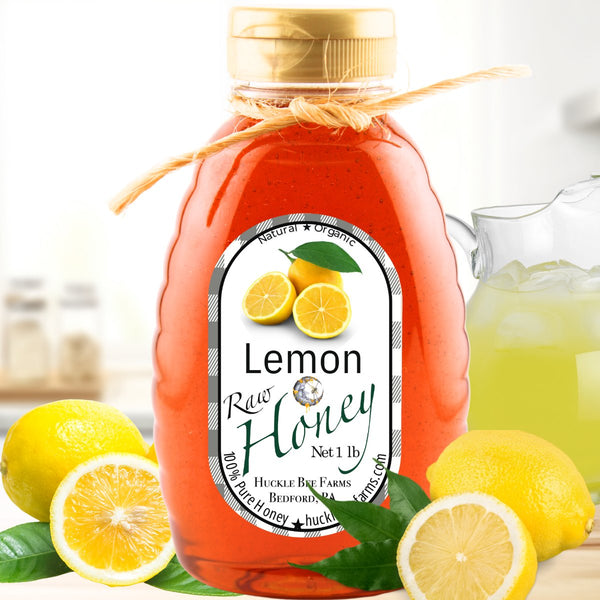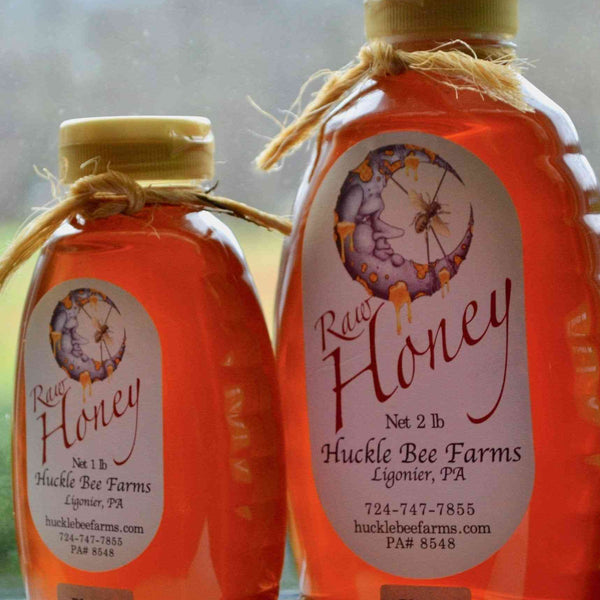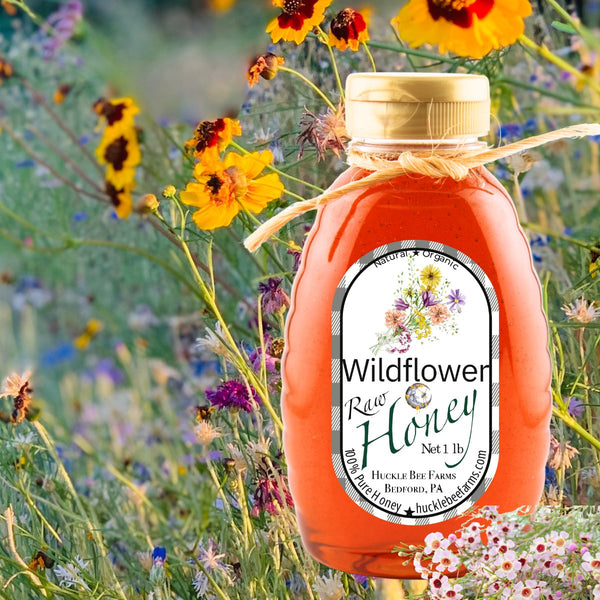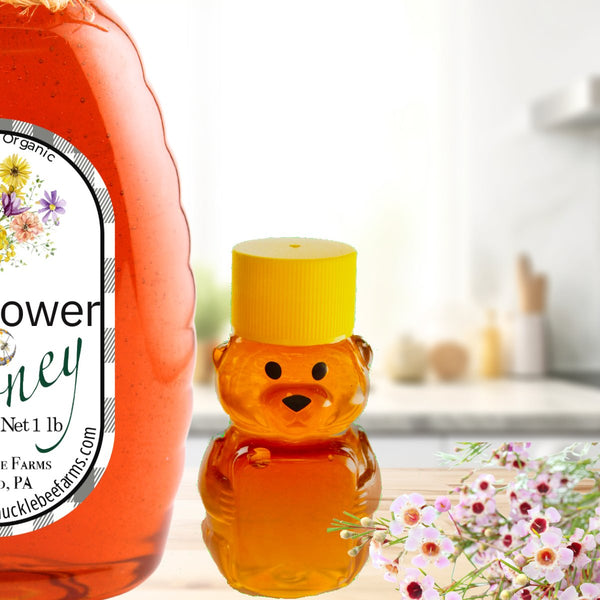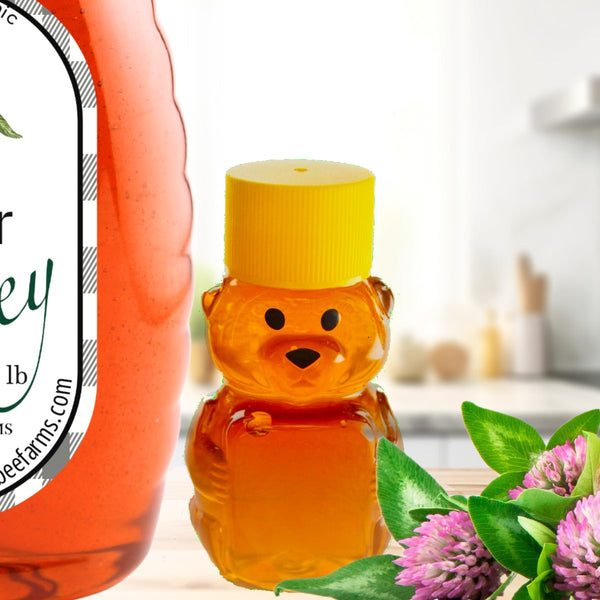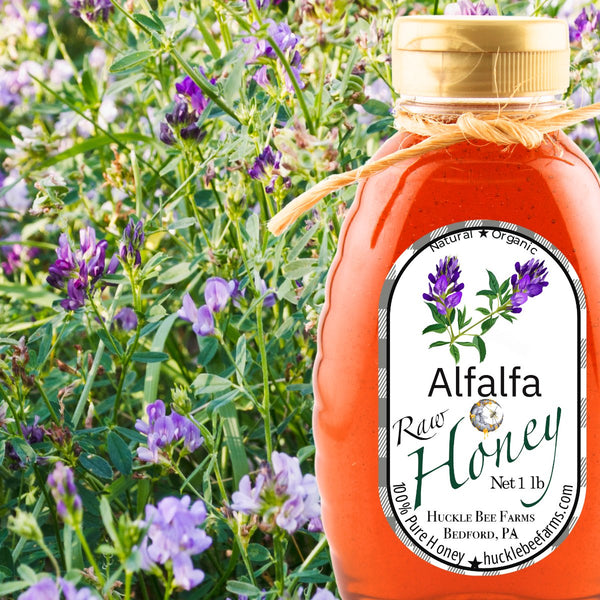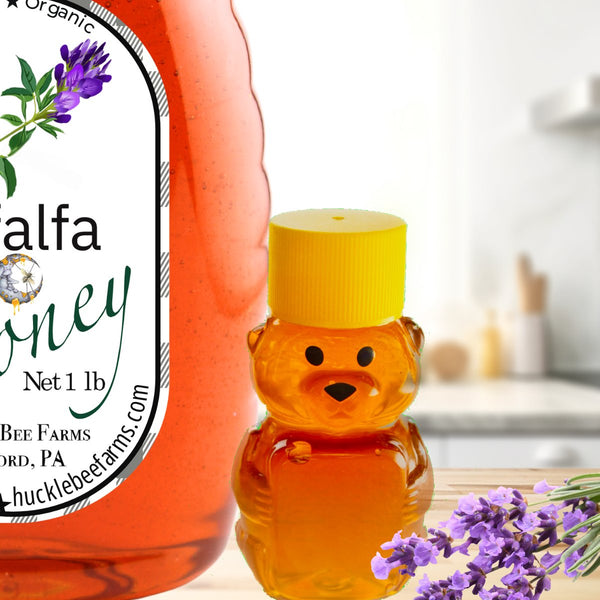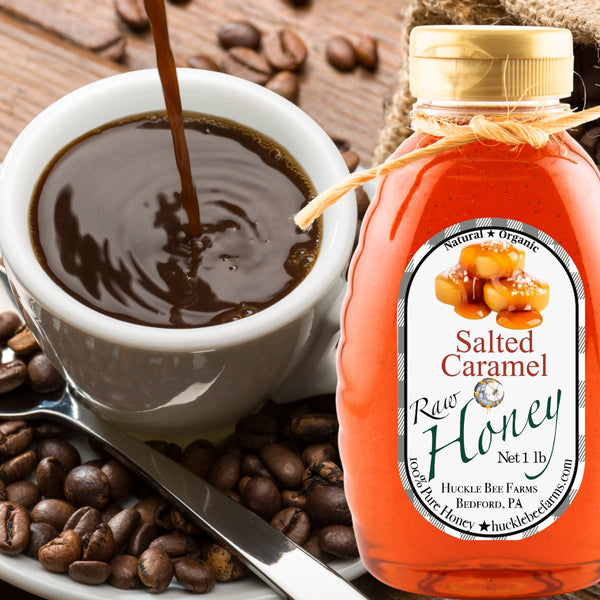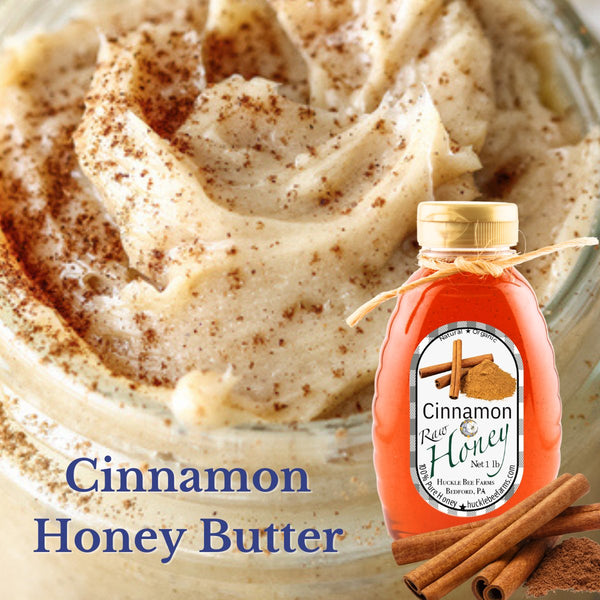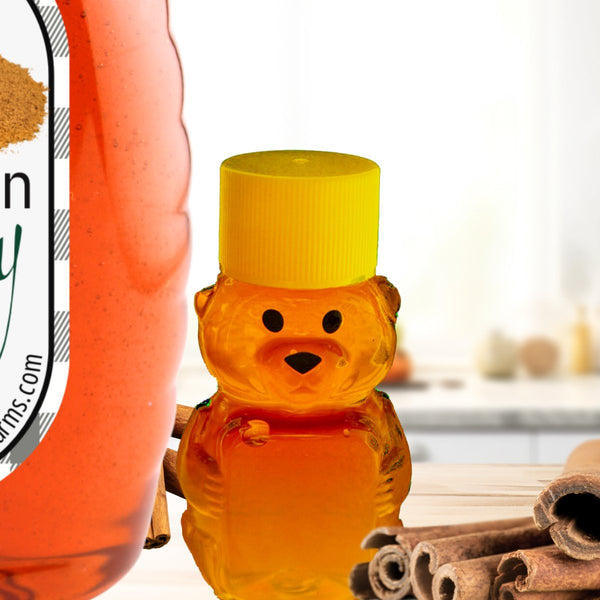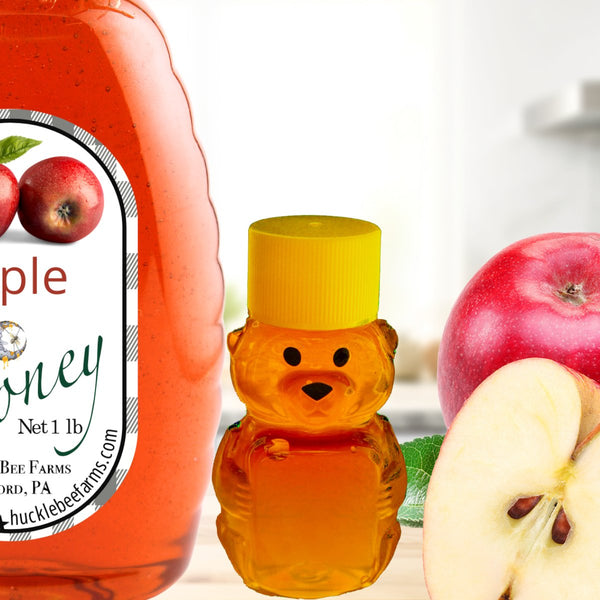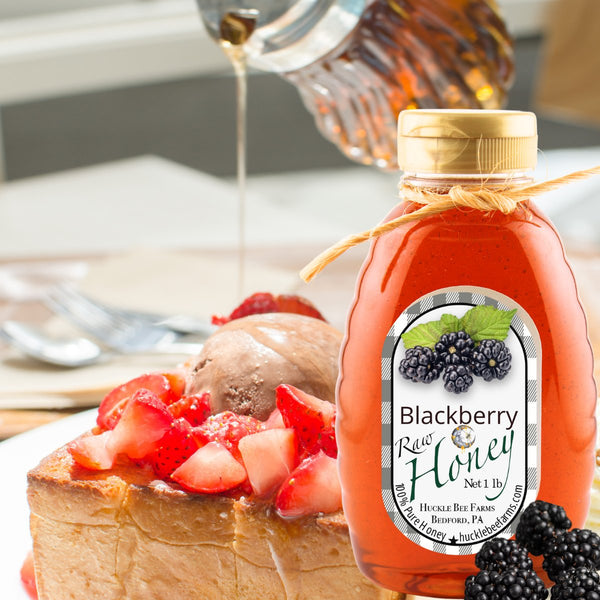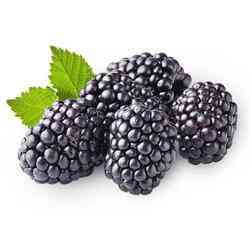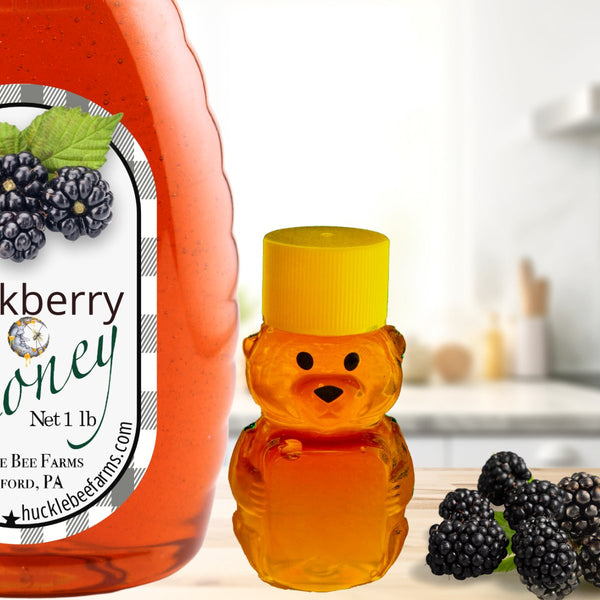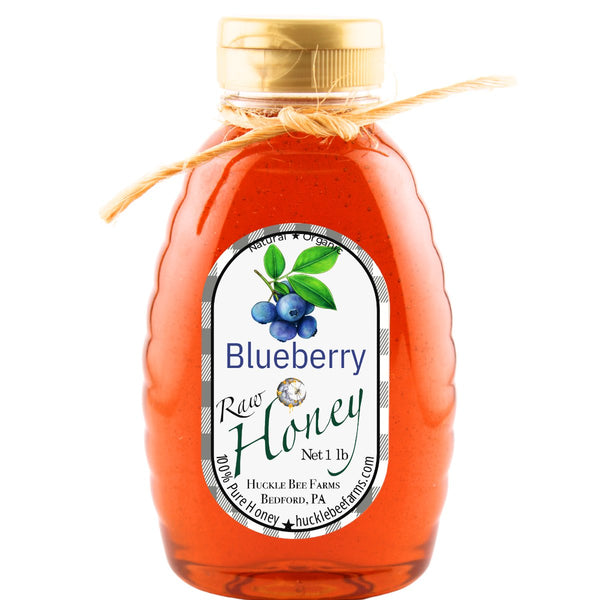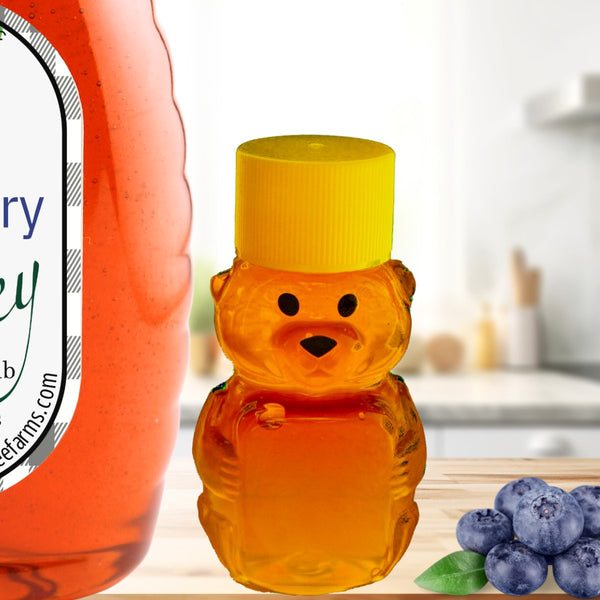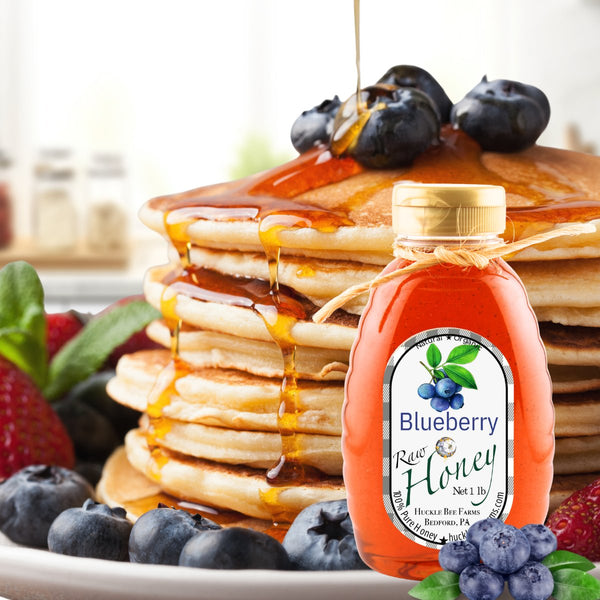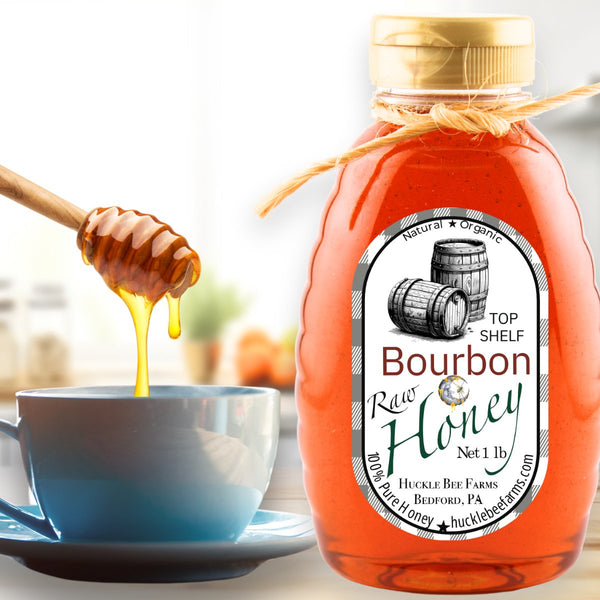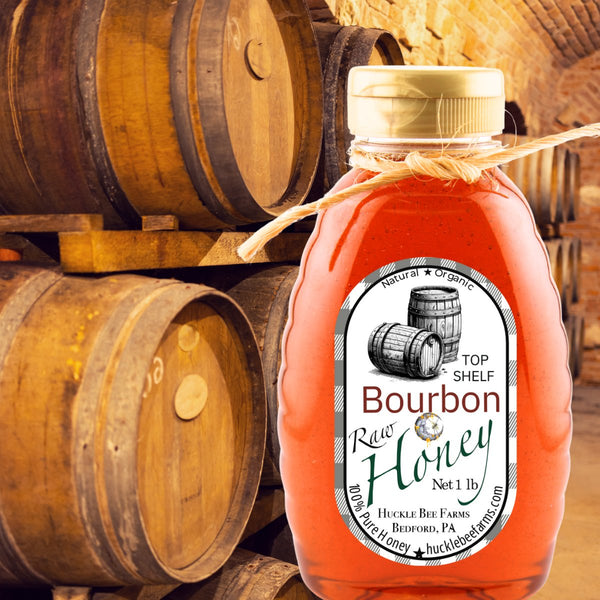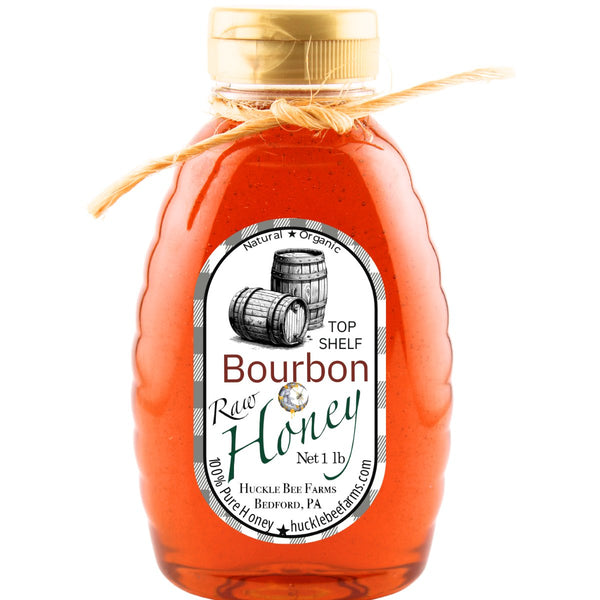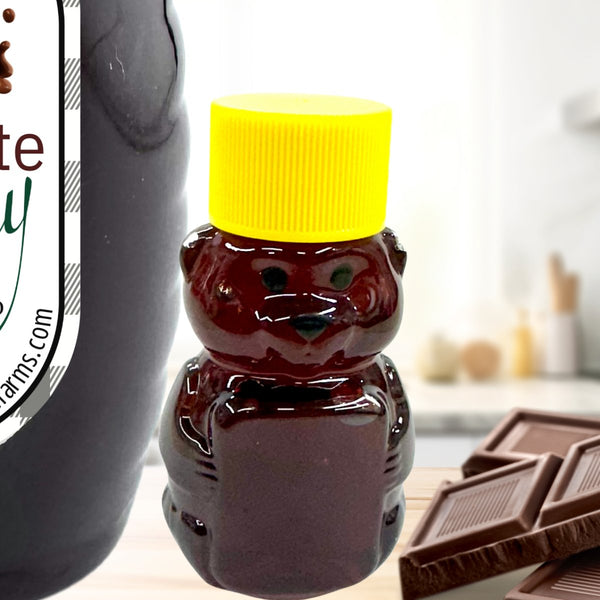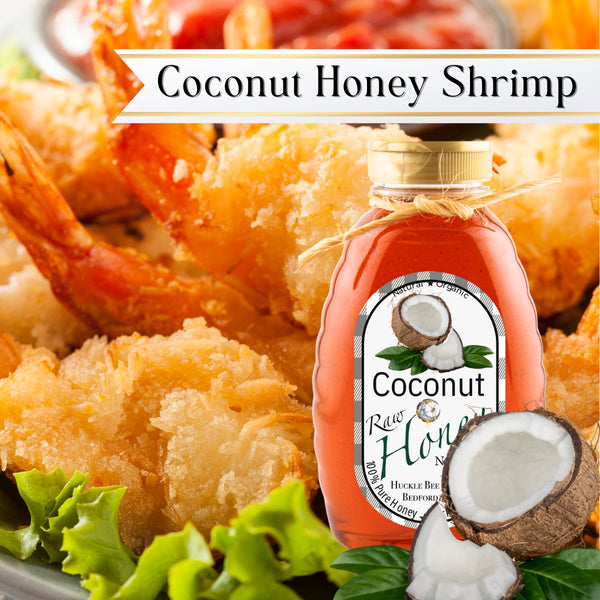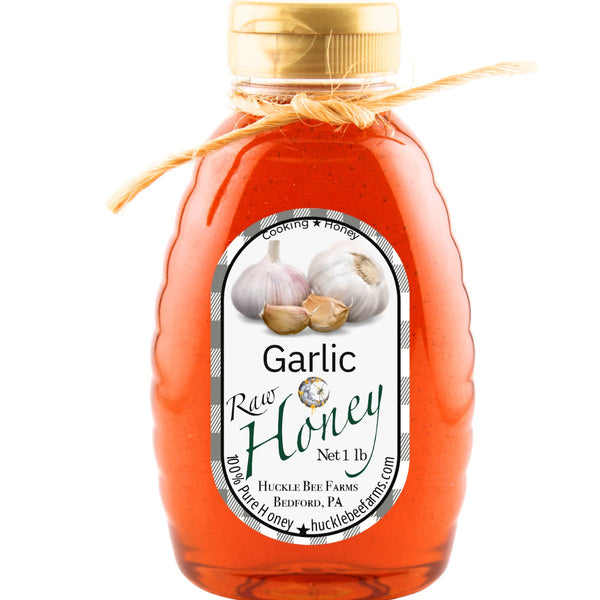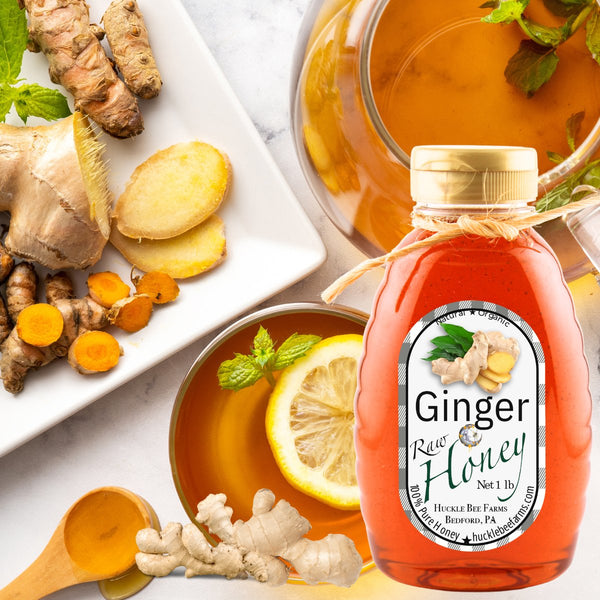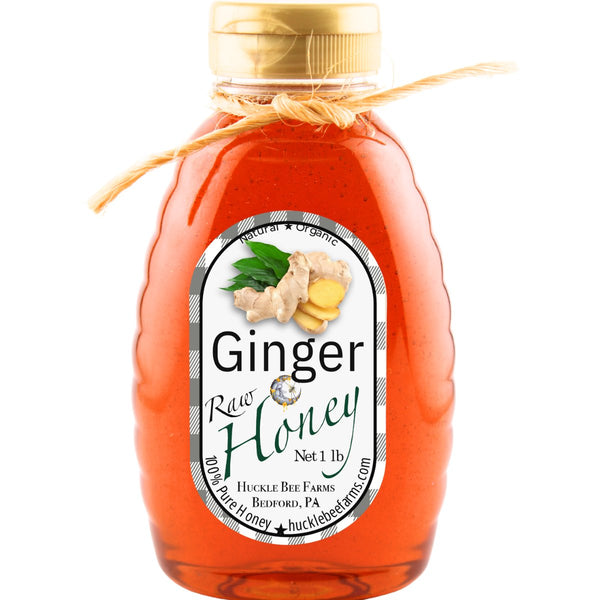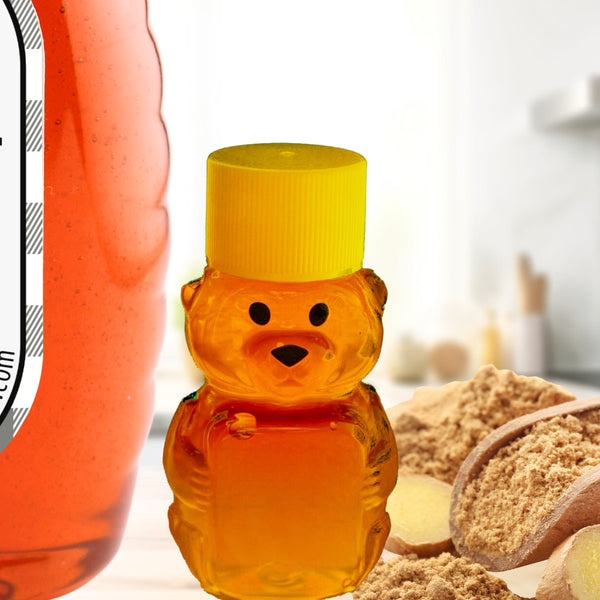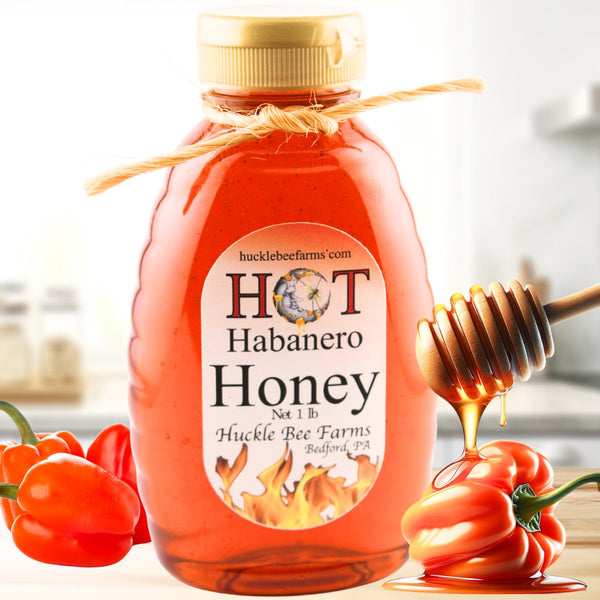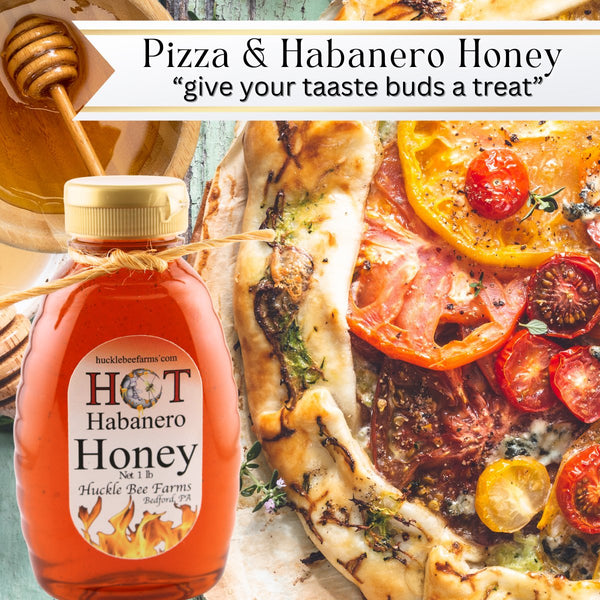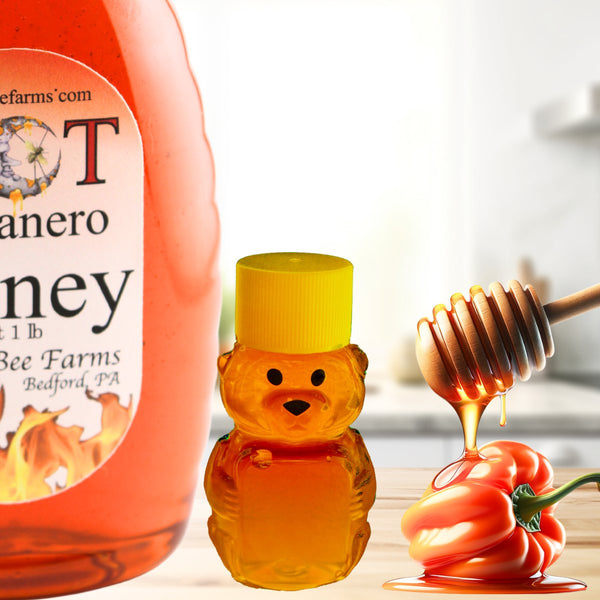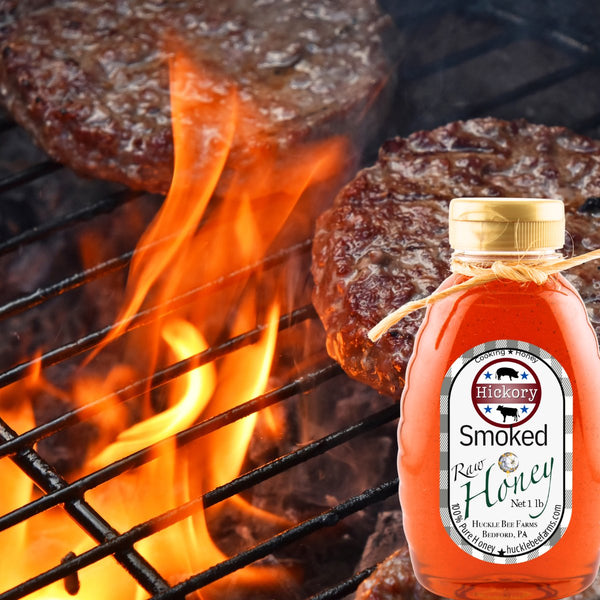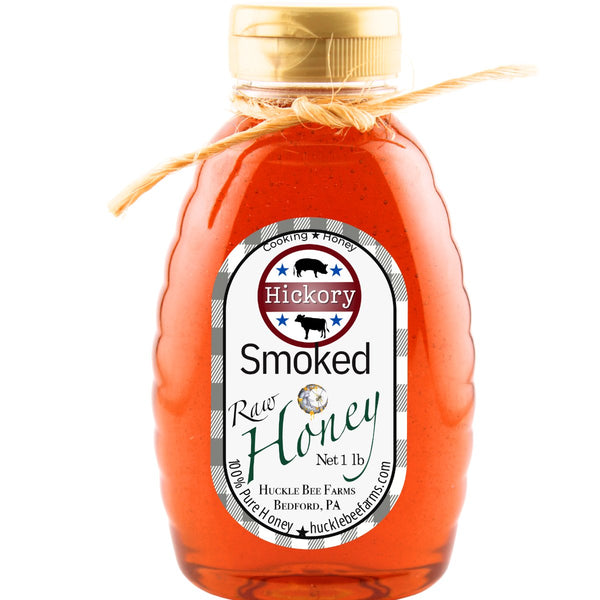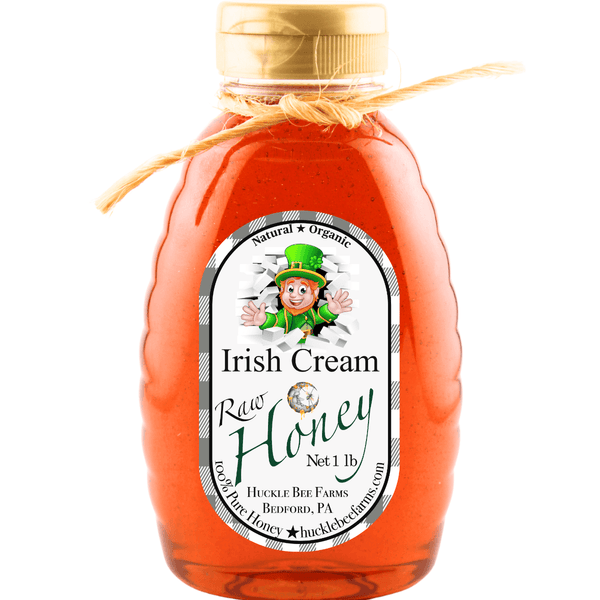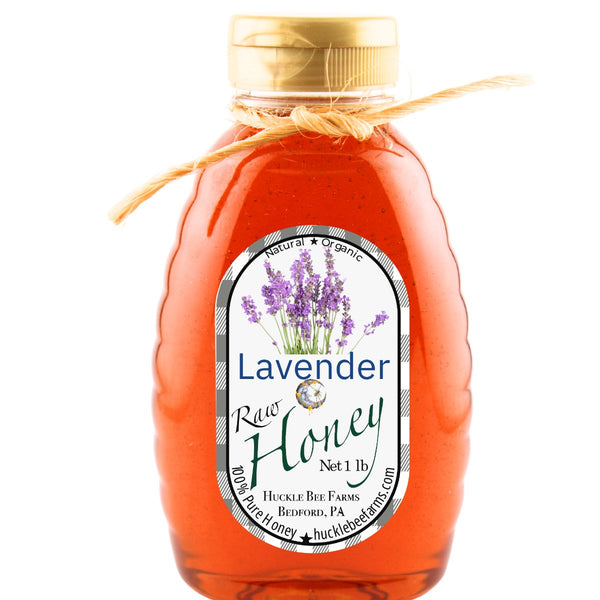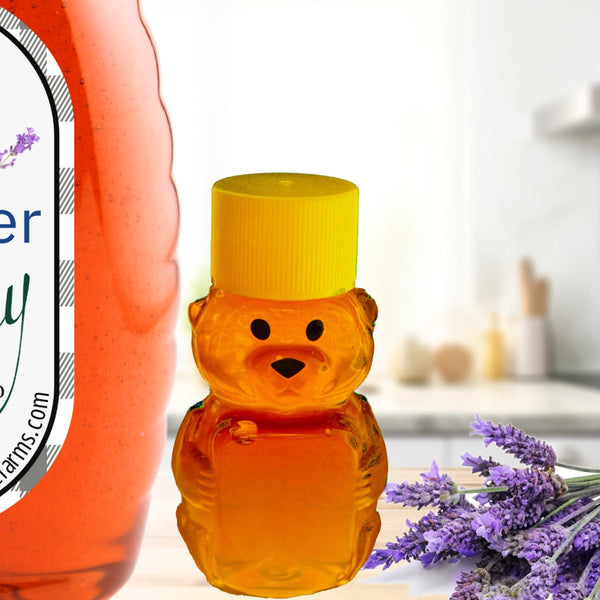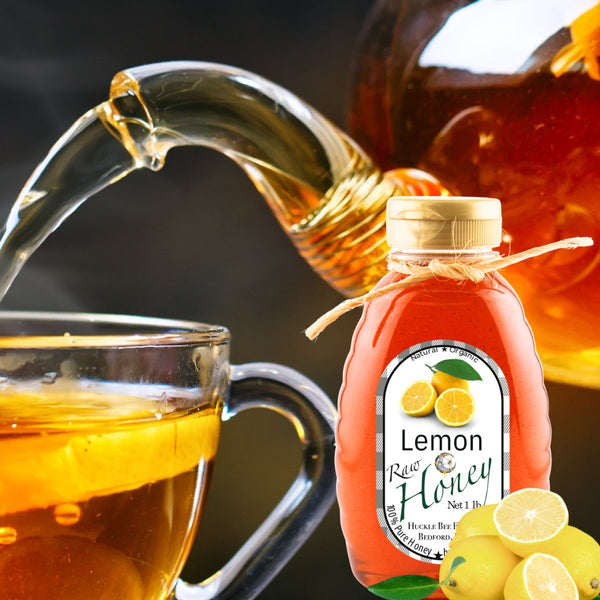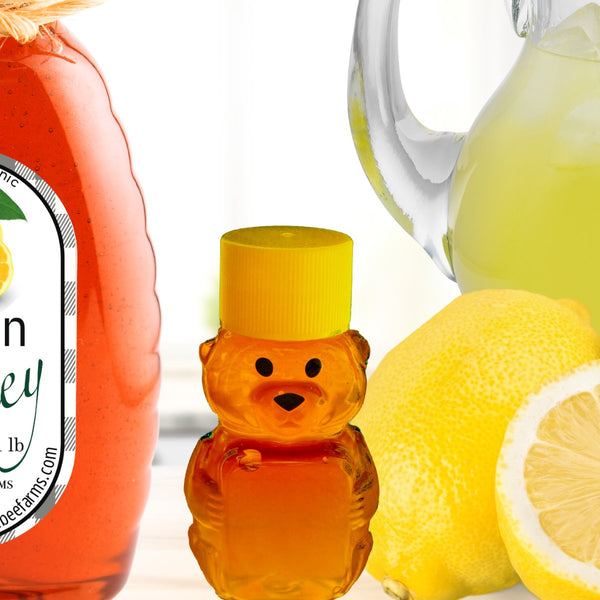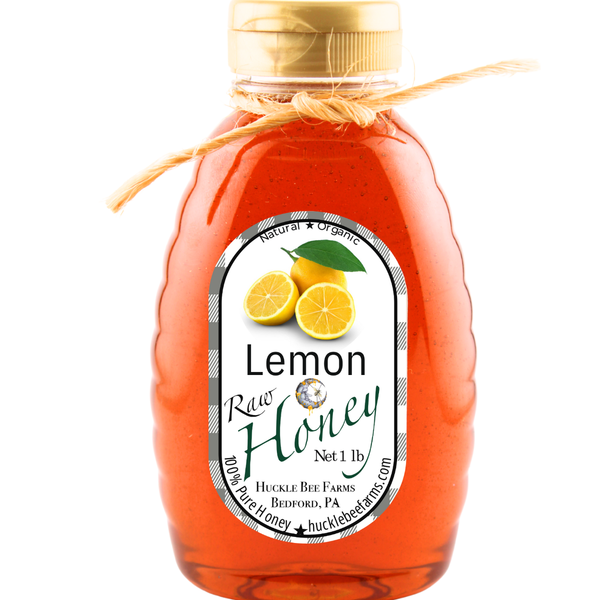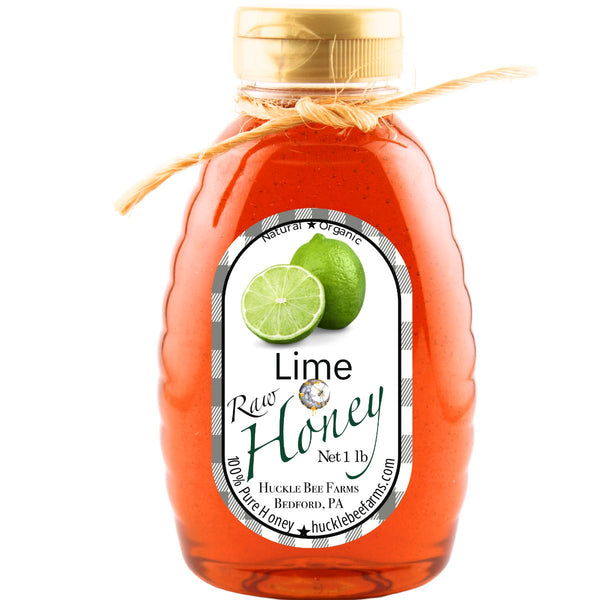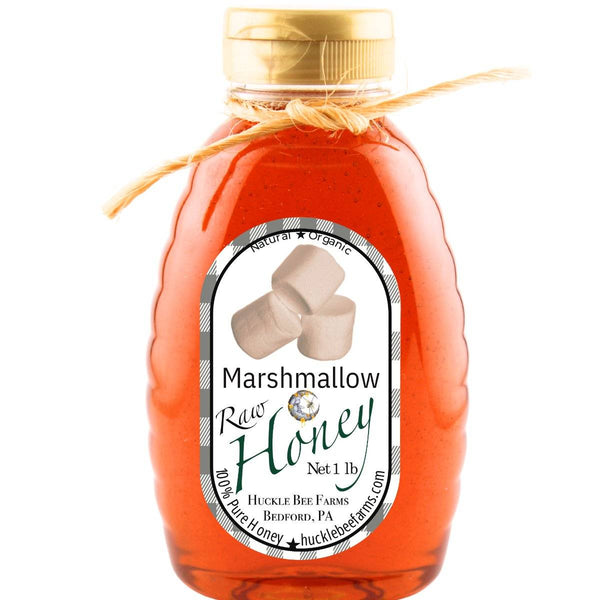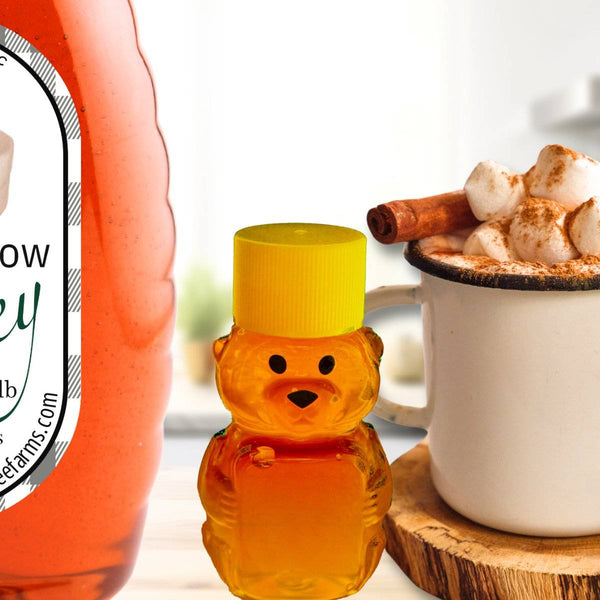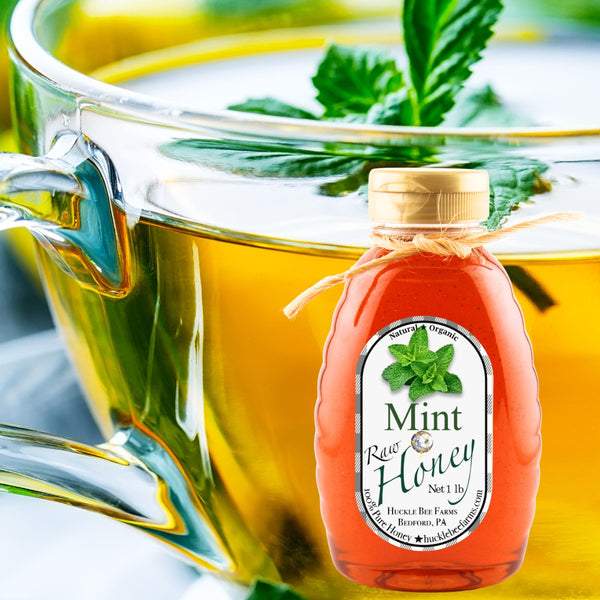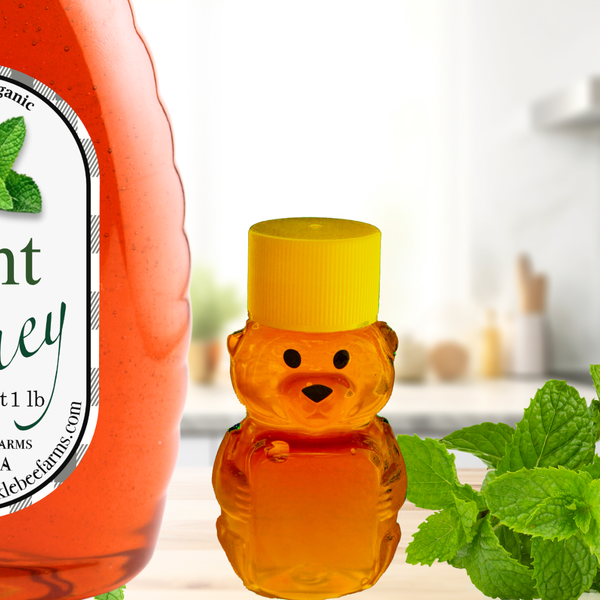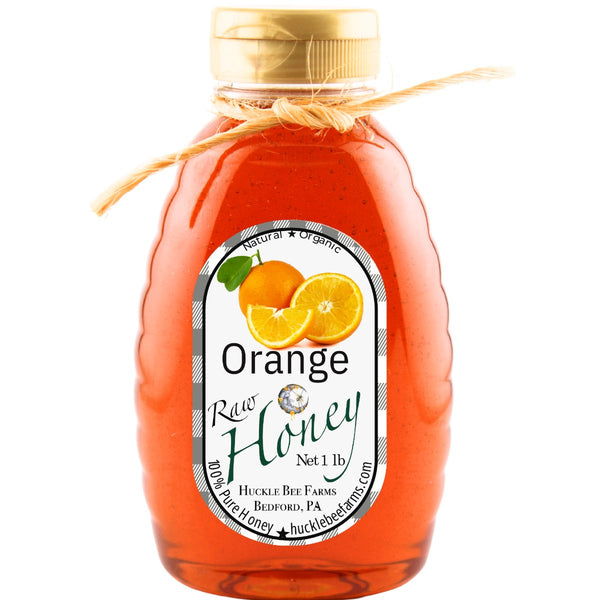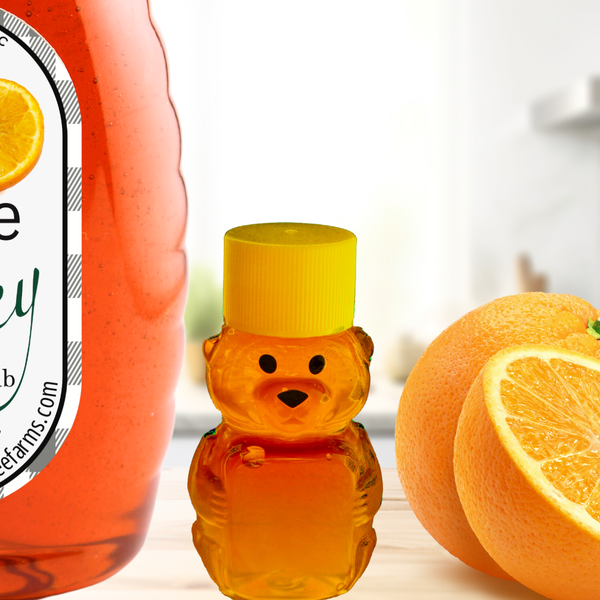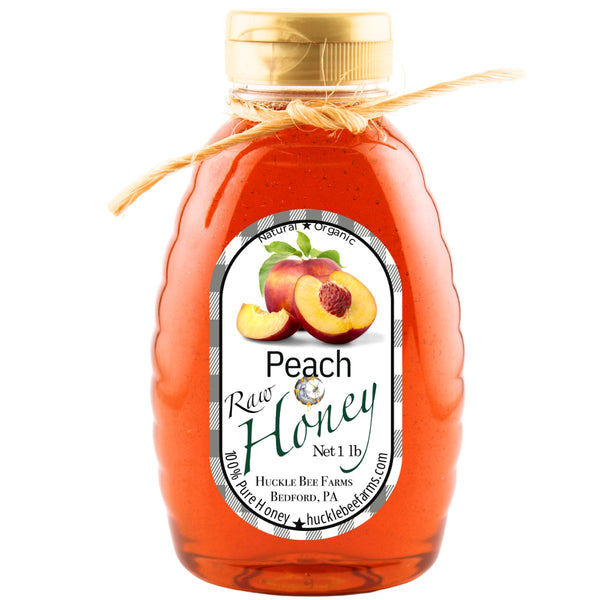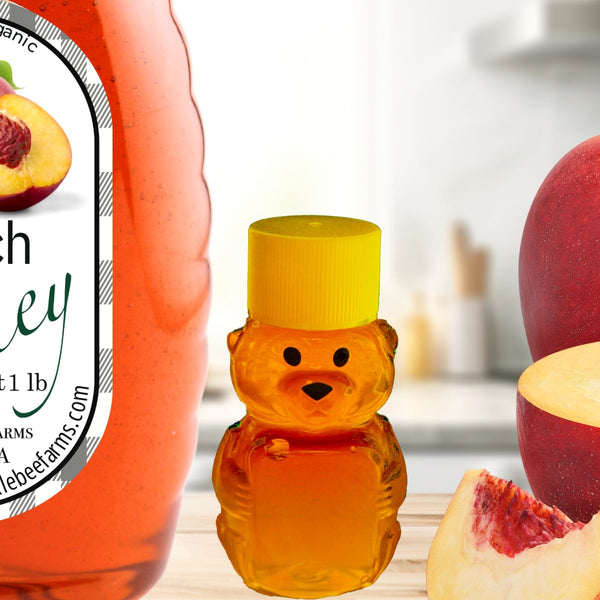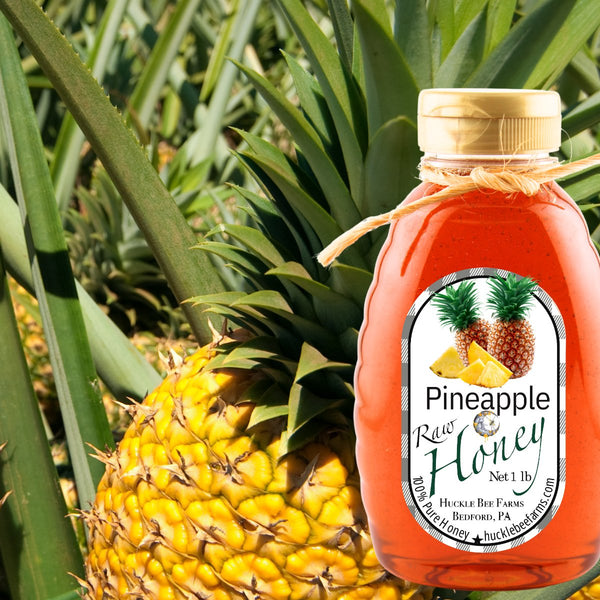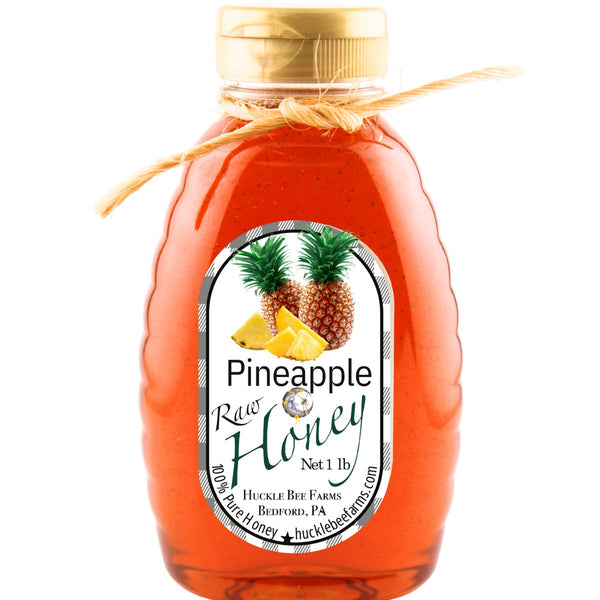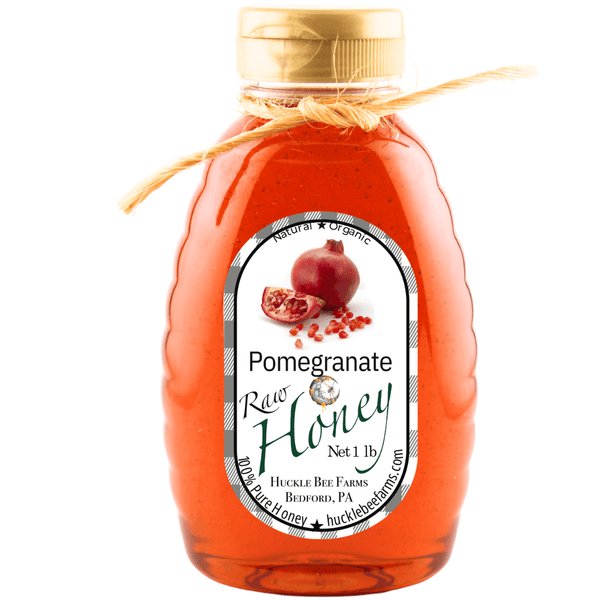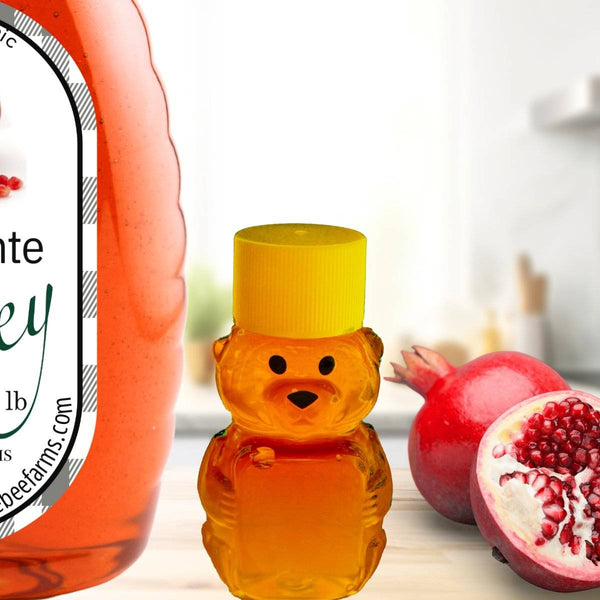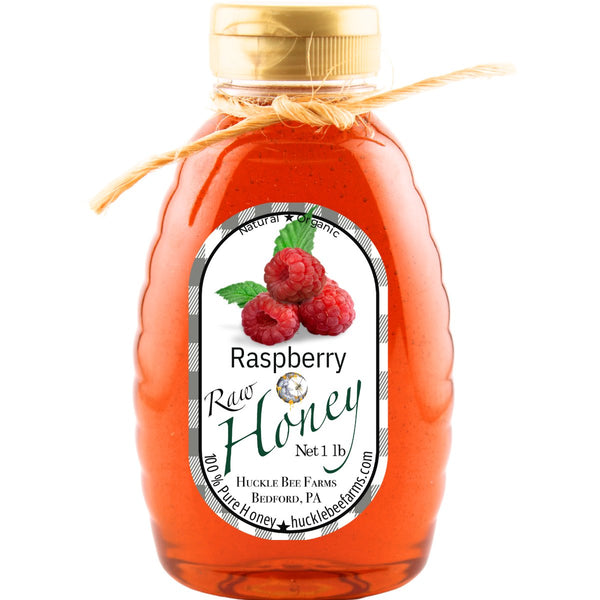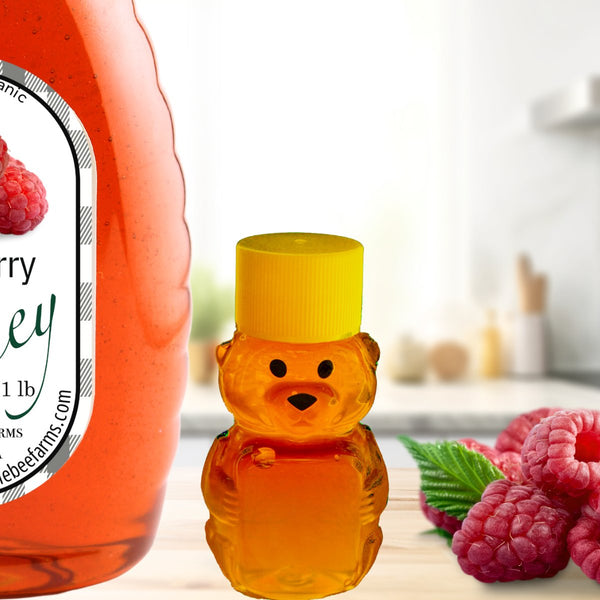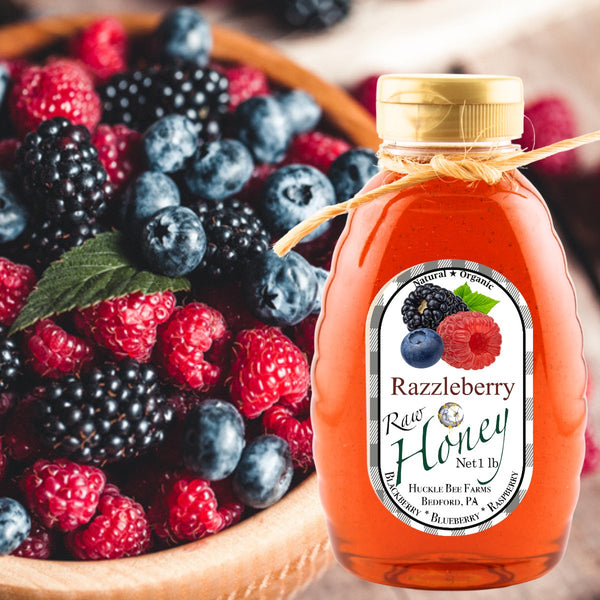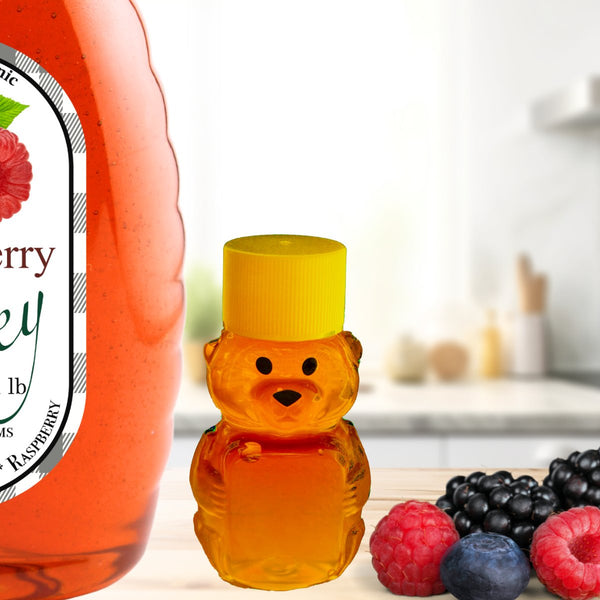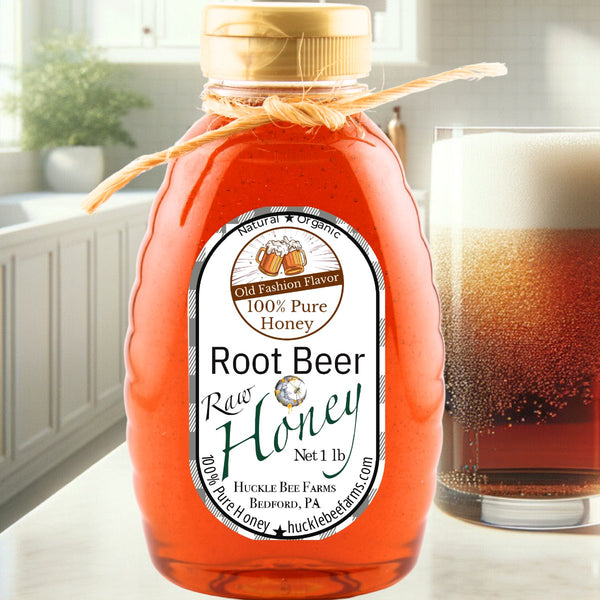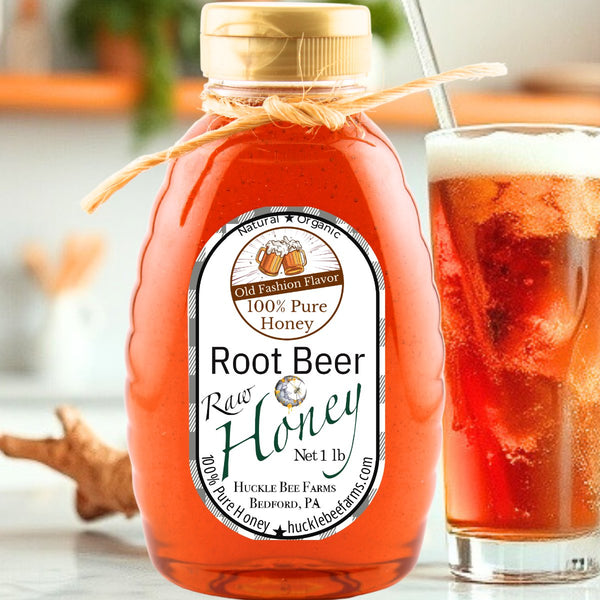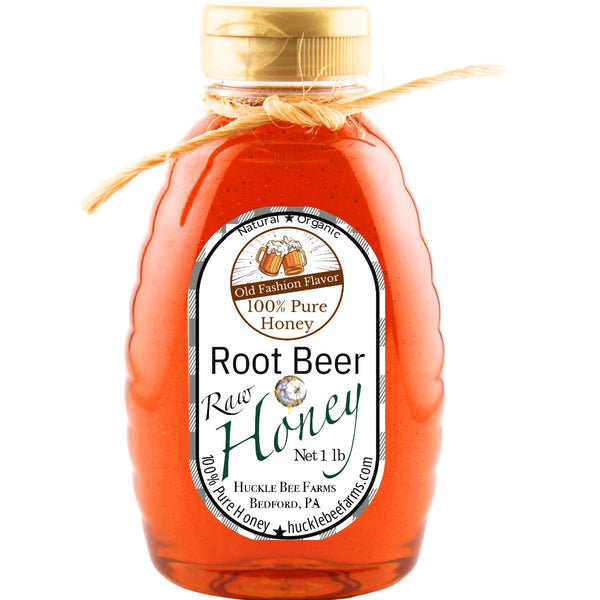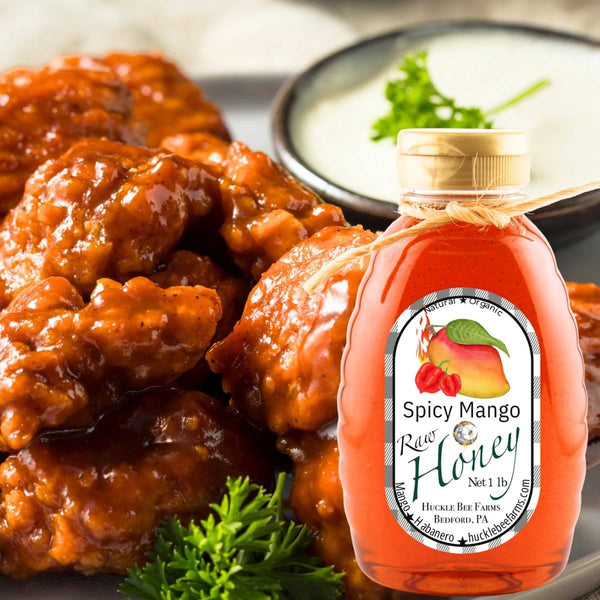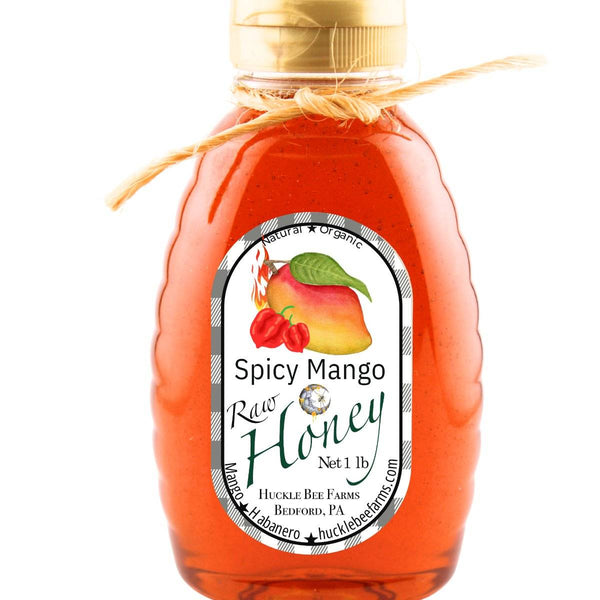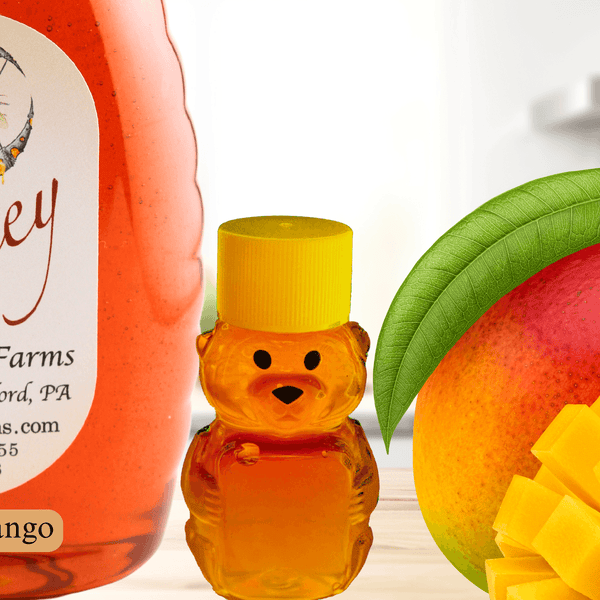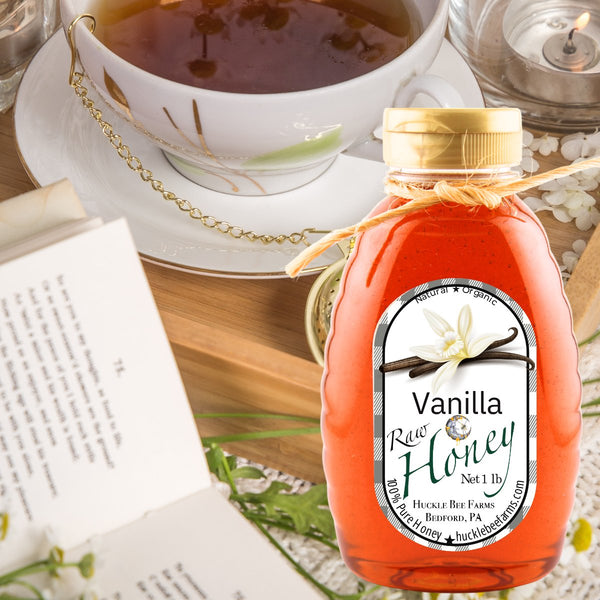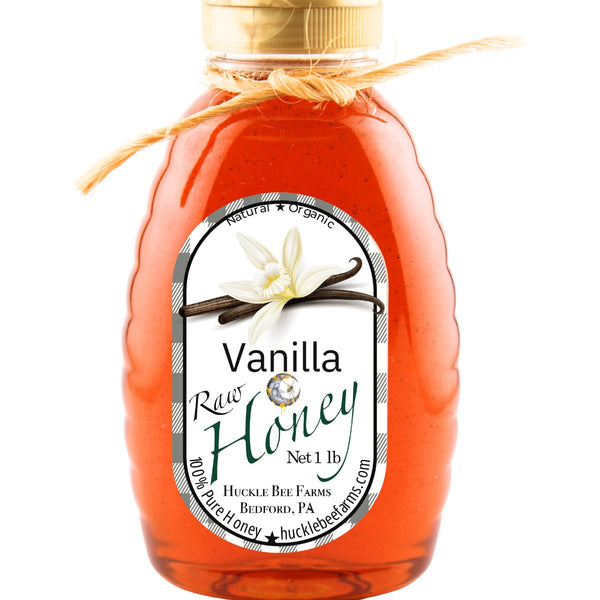From Our Hive to Your Home 🍯
At Huckle Bee Farms, every bottle of honey is crafted with care, passion, and purpose. From the moment our bees gather nectar to the time each bottle is sealed, we’re dedicated to preserving the pure, natural flavor that makes our honey truly special. Whether you love bold infusions like Bourbon or Espresso Honey, crave cozy comforts like Cinnamon or Gingerbread, or prefer the simple sweetness of Raw Wildflower—there’s a taste for every moment and mood.
🎄 Our Holiday Favorites 🎄
Prefectly Made for the Holidays
🎄 Our Bundle Sale 🎄
Add some Sweetness with a Bundle...
Taste the difference. Share the sweetness. Protect the pollinators.
Our honey isn’t just a pantry staple—it’s a story of nature, craftsmanship, and love. Hand-bottled in small batches, each flavor celebrates the beauty of the hive and the richness of the land around us.
That’s the Huckle Bee Farms promise. 🐝💛
Our Plain Raw Honey
Our Full Honey Collection
Filters
-
What is raw honey and why does it matter?
Answer: Raw honey refers to honey that has been minimally processed—usually it hasn’t been heavily heated (pasteurized) or ultra-filtered, so it retains more of its natural enzymes, pollen and beneficial compounds. G's Bees | Small Scale Apiary Products +2 The John Russell Honey Company +2 This matters because those natural components are what many people associate with the health benefits and authentic flavor of honey. At Huckle Bee Farms we prioritize this kind of care—so when you’re enjoying our honey, you’re tasting nature and craftsmanship, not over-processing.
-
Why does honey crystallize and is it bad?
Answer: Crystallization is a natural process for honey—it happens when the sugars in the honey (like glucose and fructose) begin to separate out and form crystals over time. Kinghaven Farms +2 The John Russell Honey Company +2 It’s not a sign of spoilage—just a sign you have real, natural honey. If you prefer the liquid texture, you can gently warm the bottle in a warm water bath (not boiling) until the crystals dissolve. But feel free to enjoy it as is too—some folks like the texture of crystallized honey.
-
Does honey ever go bad or expire?
Answer: In essence, honey doesn’t spoil in the typical sense—its low moisture content and natural acidity make it inhospitable for most bacteria to grow. Kinghaven Farms +1 That said, improper storage (exposed to moisture, heat, or contaminants) can degrade flavor or cause fermentation. The key: keep a clean spoon, a tightly sealed bottle, store in a cool dry place, and you’re good.
-
Is honey healthier than sugar?
Answer: Honey does offer some advantages compared to refined sugar: it contains small amounts of vitamins, minerals, antioxidants and has a slightly lower glycemic index in many cases. EatingWell +1 However, it’s still a sweetener—rich in simple sugars—so moderation is important. At Huckle Bee Farms we see honey not just as a sugar swap but as a flavor-rich, artisan ingredient that can replace sugar in many recipes and elevate your culinary experience.
-
Can honey help with allergies or hay fever?
Answer: Many people believe that local raw honey can help with seasonal allergies because it may contain trace amounts of pollen. But research is not conclusive—the pollen in honey typically is not the same as the airborne allergens that cause hay fever, and in sufficient quantity. Verywell Health +1 So yes, you can enjoy honey and it may provide soothing comfort, but it shouldn’t be treated as a cure for allergies. For your audience, you might say: Honey is a delicious complement to your wellness routine, not a replacement for allergy-medical advice.
-
Is honey safe for infants, children and pets?
Answer: For infants under 12 months, honey is not safe, due to the risk of infant botulism (caused by Clostridium botulinum spores). Kinghaven Farms +1 For children over one year, yes honey is generally safe (assuming no known allergies). For pets (dogs, etc.), some honeys designed specifically for them (like your upcoming canine honey line) can be safe in moderation—but always consult a vet for dosage and suitability. Your marketing message can lean into responsible usage: safe age thresholds, portion sizes, and vet-approved formulations.
-
How should I store honey and does temperature matter?
Answer: Store honey in a cool, dry place—ideally at room temperature, out of direct sunlight, and in a tightly sealed bottle. G's Bees | Small Scale Apiary Products +1 Refrigeration is not recommended because it speeds up crystallization. If it crystallizes, you can gently warm it in a warm water bath (not boil) until smooth again. Avoid moisture or any contamination (dirty spoons, etc.), which can lead to fermentation or spoilage of the flavor.
-
What should I look for when buying quality honey?
Answer: A few helpful criteria: Is the honey harvested by a beekeeper?
1. Is it minimally processed (raw, not overly heated or filtered)?
2. Is the source transparent (region, nectar type)?
3. Avoid over-filtered/ultra-heated honeys which might suppress the character and benefits.
4. Check for proper storage and packaging that protects from moisture and heat. By communicating your farm-based sourcing, small-batch processing, and pollinator-friendly practices, you’re hitting excellent quality signals.
-
What are some creative ways to use honey besides just on toast?
Answer: Honey is incredibly versatile! Here are some ideas aligned with your brand and product line:
1. Drizzle over yogurt, oatmeal, or fresh fruit for a natural sweet lift.
2. Mix into tea or coffee instead of sugar—especially great with your infused varieties (e.g., cinnamon, espresso).
3. Use as a glaze for roasted vegetables or meats (think honey-garlic salmon, honey-mustard chicken).
4. Incorporate into salad dressings: honey + mustard + vinegar + olive oil.
5. Add to cheese boards: pair a robust raw wildflower honey with aged cheese, fruits, nuts.
6. Bake with honey replacing part of the sugar in a recipe (you’ll want to adjust liquid and temperature slightly).
7. These ideas can make your Honey Collection page “sticky” by giving customers inspiration to use your product.
-
Does the floral source or region of the honey make a difference?
Answer: Absolutely. The nectar source (what flowers the bees visit) and the region/season influence the honey’s color, flavor profile, aroma, and even crystallization rate. G's Bees | Small Scale Apiary Products +1 For example, wildflower honey harvested from meadow blooms will taste and look different than buckwheat or orange blossom honey. At Huckle Bee Farms you can highlight how your local forage, beehive location, and seasonal harvests give each flavor its unique story. This both differentiates your products and educates your audience on why artisanal honey is distinct from commodity honey.








